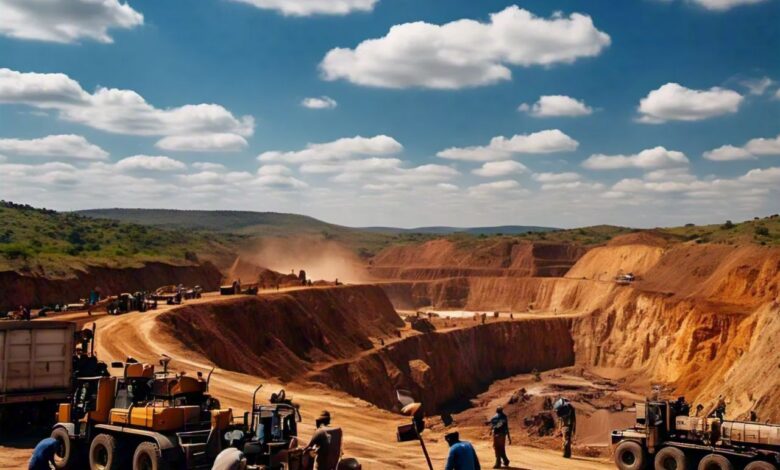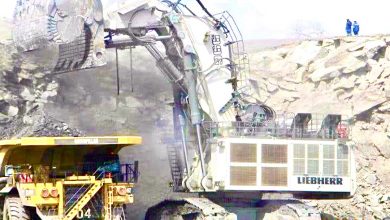Mining’s Role in Zimbabwe’s GDP: Growth – What Does It Mean for the Economy?

The mining sector has emerged as a crucial driver of Zimbabwe’s economic growth, significantly contributing to the country’s Gross Domestic Product (GDP). Over the past decade, mining’s share of Zimbabwe’s GDP has grown. Furthermore, this increase has far-reaching implications for Zimbabwe’s economic development and future prospects.
Mining’s Rising Contribution to Zimbabwe’s GDP
The mining sector’s importance in Zimbabwe’s economy cannot be overstated. According to recent reports, the sector now accounts for about 12 percent of the country’s gross domestic product (GDP) and 80 percent of national exports 1. This significant contribution underscores the vital role mining plays in Zimbabwe’s economic landscape.
The sector’s growth trajectory is impressive, with projections indicating a potential increase to 20 percent of GDP in the near future. This anticipated rise reflects the sector’s immense potential and the government’s efforts to maximise its benefits for the nation 1.
Implications for National Economic Development
The increasing contribution of mining’s role to Zimbabwe’s GDP has several important implications for national economic development. Firstly, there is job creation and employment opportunities. The mining sector’s growth has led to increased job opportunities, both directly and indirectly. This expansion helps reduce unemployment rates and improves the overall standard of living for Zimbabweans 1.
Secondly, there are foreign currency earnings. As mining accounts for a significant portion of exports, it contributes substantially to Zimbabwe’s foreign currency earnings. This influx of hard currency helps address balance of payments challenges and improves the country’s ability to import essential goods and services 1.
Thirdly, it prompts infrastructure development. The mining sector often requires significant investment in infrastructure such as roads, railways and power generation facilities. This investment can spill over into other sectors, contributing to overall economic development 1.
Additionally, there are technological advancements. Mining operations frequently involve cutting-edge technology, which can lead to technological spillover effects benefiting other industries and driving innovation 1.
Finally, there will be diversification of the economy. While mining remains crucial, its growth also encourages diversification efforts. The government is exploring opportunities in value-added mineral products, aiming to reduce dependence on raw material exports 1. This will help improve mining’s role to Zimbabwe’s GDP.
Challenges Facing Zimbabwe’s Mining Sector
Despite its growth potential, the mining sector in Zimbabwe faces several challenges. Moreover, there are incessant power shortages in Zimbabwe. These persistent power shortages hinder mining operations, affecting production levels and costs 1. Also, there are foreign currency shortages. Here, there is limited access to foreign currency which impacts miners’ ability to import necessary equipment and materials 1.
Additionally, policy uncertainties impede productivity in the mining sector. Fluctuating policies and regulations can deter investment and hinder long-term planning in the sector 1. Finally, there are also environmental concerns that come with mining. As mining activities expand, there is growing concern about environmental impacts and the need for sustainable practices 1.
Therefore, these challenges pose a significant threat to productivity, however, there can be a number of solutions to these. Alternative power generation apart from the national grid, foreign and local investment to access foreign currency funding just to mention a few solutions.
Opportunities for Growth
Despite the challenges, there are significant opportunities for further growth in Zimbabwe’s mining sector. Zimbabwe boasts substantial lithium deposits, with claims that the country will meet 20 percent of global demand once fully exploited 1. This presents a major opportunity for economic growth through export of this valuable mineral.
Also, efforts to make the sector more investor-friendly through policy reforms could attract additional capital and expertise 1. Additionally, there is scope for increased domestic production of value-added mineral products, potentially creating new industries and jobs 1. Finally, the mining sector offers opportunities for heavy machinery and transportation infrastructure development 1. These can be used in other sectors of the economy to further contribute to the nation’s GDP.
Conclusion
In conclusion, the mining sector’s increasing contribution to Zimbabwe’s GDP represents a significant turning point in the country’s economic trajectory. While challenges exist, the sector’s growth potential offers substantial benefits for Zimbabwe’s development. Addressing the current hurdles and leveraging the opportunities could position mining as a cornerstone of Zimbabwe’s economic future, driving growth and improving living standards for generations to come.




